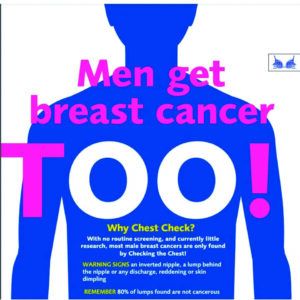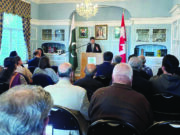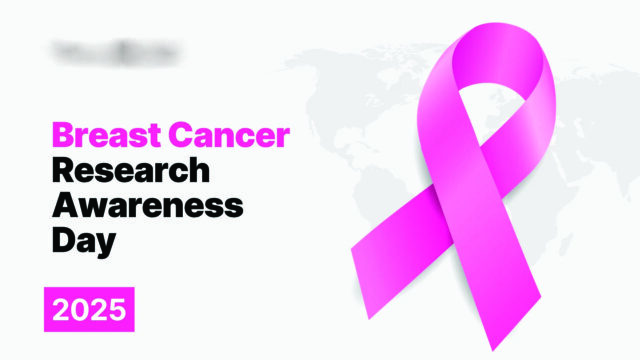Breast cancer starts in the cells of the breast. A cancerous (malignant) tumour is a group of cancer cells that can grow into and destroy nearby tissue. It can also spread (metastasize) to other parts of the body.
Cells in the breast sometimes change and no longer grow or behave normally. These changes may lead to non-cancerous (benign) breast conditions such as atypical hyperplasia and cysts. They can also lead to non-cancerous tumours such as intraductal papillomas.
But in some cases, changes to breast cells can cause breast cancer. Most often, breast cancer starts in cells that line the ducts, which are the tubes that carry milk from the glands to the nipple. This type of breast cancer is called ductal carcinoma. Cancer can also start in the cells of the lobules, which are the groups of glands that make milk. This type of cancer is called lobular carcinoma. Both ductal carcinoma and lobular carcinoma can be in situ, which means that the cancer is still where it started and has not grown into surrounding tissues. They can also be invasive, which means they have grown into surrounding tissues.
Less common types of breast cancer can also develop. These include inflammatory breast cancer, Paget disease of the breast and triple negative breast cancer. Rare types of breast cancer include non-Hodgkin lymphoma and soft tissue sarcoma. Source: cancer.ca/en/
Awareness Month?
Breast Cancer Awareness Month is an international health campaign that’s held every October. The month aims to promote screening and reduce the risk of the disease, which affects 2.3 million women worldwide. Known best for its pink theme color, the month features a number of campaigns and programs designed to:
support people diagnosed with breast cancer, including those with metastatic breast cancer educate people about breast cancer risk factors encourage women to go for regular breast cancer screening starting at age 40 or earlier, depending on personal breast cancer risk
The day also serves as a reminder that people can do all the right things — breast cancer screenings and all the recommended treatments for early-stage breast cancer — and still have cancer spread to other parts of the body. As sf-cakes, a member of the Breastcancer.org Community, shared, “Being stage IV during Breast Cancer Awareness Month sucks. All the messaging about ‘if you catch it early, you’ll be fine,’ is simply not always true.”
The history of Breast Cancer Awareness Month
The event began in 1985 as a week-long awareness campaign by the American Cancer Society, in partnership with Imperial Chemical Industries, a British company that made tamoxifen. The campaign eventually grew into a month-long event.
In 1992, the pink ribbon came into play after Alexandra Penney, SELF magazine’s editor-in-chief, partnered with Evelyn Lauder, Estée Lauder’s senior corporate vice president and a breast cancer survivor, to distribute pink ribbons after the magazine’s second annual Breast Cancer Awareness Month issue.
Other variations of the pink ribbon have emerged in recent years to raise awareness that all people with breast cancer are not the same. These include ribbons for raising awareness about metastatic breast cancer, men with breast cancer, inflammatory breast cancer, and more…
Source:breastcancer.org
 Breast cancer in Men in Canada
Breast cancer in Men in Canada
Breast cancer is most often diagnosed in women, but men can also develop it. All adults have breast tissue, though male breasts are less developed. Breast cancer in men may be referred to as male breast cancer. Less than 1% of all breast cancers occur in men. Transgender, non-binary and gender-diverse people can also develop breast cancer.
Breast cancer in men is similar to the disease in women. Most breast cancers diagnosed in men are ductal carcinoma, which start in the cells lining the ducts. Find out more about the breasts and ductal carcinoma.
Symptoms
It is important to know what is normal for your breasts and the nearby areas and to report any changes to your doctor. The most common sign of breast cancer in men is a lump, often near or under the nipple.
Other signs and symptoms include: discharge or bleeding from the nipple a nipple that turns inward (inverted nipple) changes to the colour of the breast, such as turning red or darker than usual
swelling or flaking of the breast a lump or thickening in the armpit
an open sore (ulcer) on the skin of the breast that doesn’t heal
Find out more about the symptoms of breast cancer.
Diagnosis
Your doctor may refer you to a specialist or order tests to check for breast cancer or other health problems. Tests that are often used to diagnose breast cancer in men include mammography, ultrasound and core biopsy. Hormone receptor status testing and HER2 status testing are also an important part of diagnosis. Source: cancer.ca/en/
Estimated Canadian breast cancer statistics (2024)
Category Women New cases. 30,500
Deaths :5,500
Men: New cases. 290
Deaths :60
5-year net survival (estimates for
2015 to 2017)- 89% Women. 76%- Men
6.7
C
Vancouver
Wednesday, November 5, 2025




























